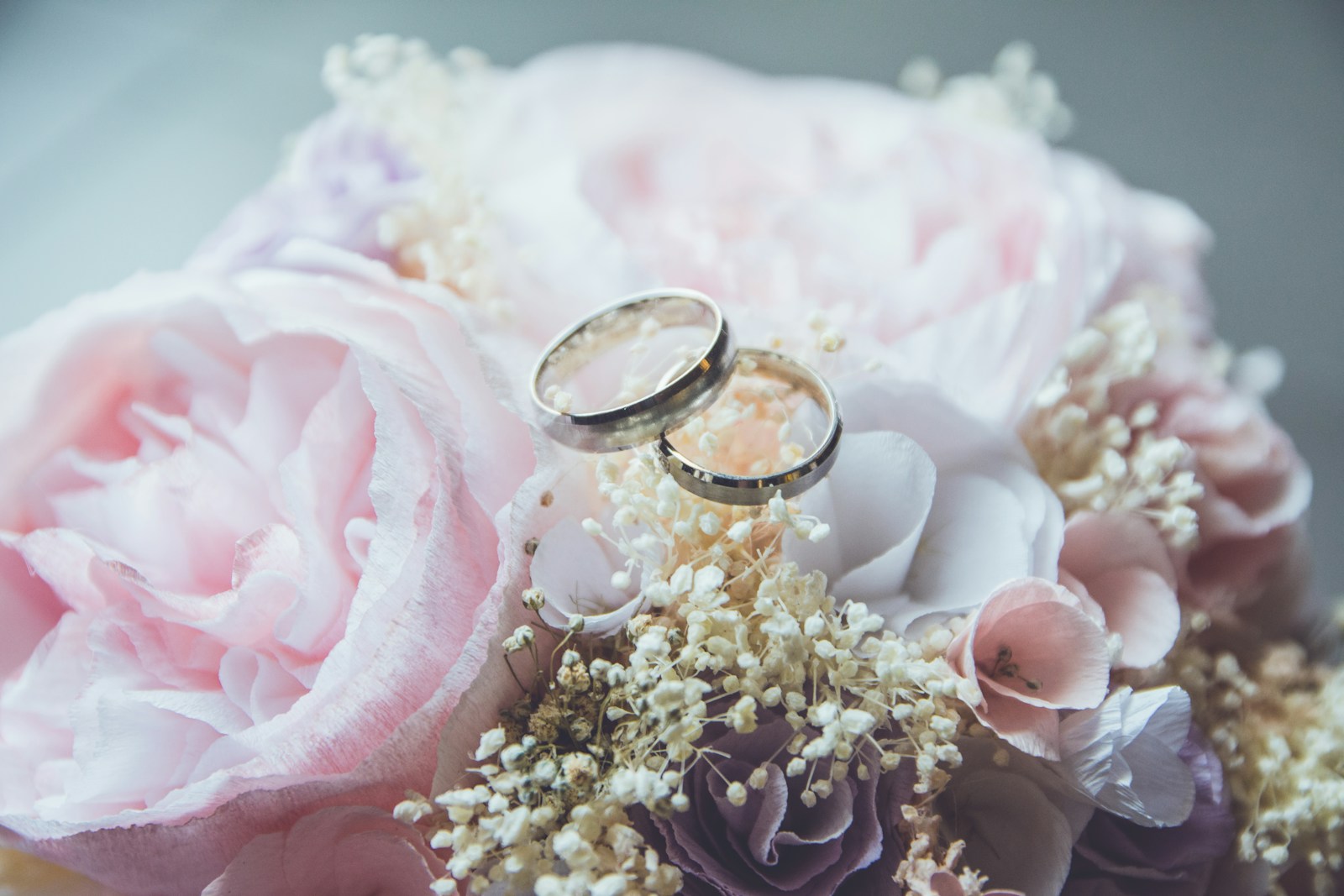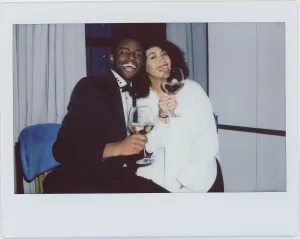Choosing the right colors and themes for your wedding is akin to setting the stage for an unforgettable performance. The hues you select will weave through every aspect of your big day, creating an atmosphere that is uniquely yours. Let’s dive deeper into the process of selecting wedding colors and themes, exploring practical tips, examples, and the common pitfalls to avoid. Before you start picking colors, immerse yourself in inspiration. This preliminary step is crucial as it helps you visualize the possibilities. Browse through wedding blogs, Instagram, Pinterest, or even your favorite movies and art for ideas. Keep an eye out for color combinations that resonate with you and your partner.
Real-Life Inspiration
Take a cue from significant places or experiences in your life. Perhaps you and your partner met in a quaint seaside town; incorporating shades of ocean blue and sandy beige could evoke cherished memories. Or maybe your proposal took place in a blooming spring garden, suggesting a palette of soft pinks and lush greens. Another approach is to draw inspiration from cultural or family traditions. If your family has a history of celebrating in vibrant, colorful attire, you might want to reflect those hues in your wedding theme.
Expanding Your Sources of Inspiration
While traditional sources like magazines and online platforms offer a wealth of ideas, don’t shy away from less conventional sources. Museums and art galleries can provide insights into color pairings that you might not have considered. Similarly, fashion shows often showcase innovative color combinations that can translate beautifully into wedding decor. Think about the color palettes found in nature too—sunset hues, forest greens, or the delicate colors of a butterfly’s wings.
Consider Your Personal Style
Your personal style is the heart of your wedding’s color scheme. Are you more bohemian with a love for earthy tones, or do you lean towards classic elegance with a penchant for monochrome palettes? Reflecting your individuality in your wedding colors will ensure the day feels authentically yours.
Example: Personal Style Reflection
Imagine a couple who loves hiking and the great outdoors. They might choose a theme that incorporates greens and browns, with accents of wildflowers to bring the essence of the forest to their celebration. This not only personalizes the event but also makes guests feel more connected to the couple’s story. Alternatively, a couple with a taste for the avant-garde might opt for a modern art-inspired theme, featuring bold geometric patterns and a mix of primary colors.
Exploring Different Style Aesthetics
Consider how your wardrobe, home decor, and even travel preferences can inform your wedding theme. If you frequently find yourself drawn to minimalist designs, a wedding with clean lines, simple decor, and a monochromatic color scheme might feel just right. On the other hand, if you’re a fan of vintage styles, you might incorporate antique lace, sepia tones, and retro details into your wedding.
Seasonal Influence
Seasons offer a natural guide for your color choices, each bringing its own unique palette.
Spring Weddings
Spring is synonymous with renewal and freshness. Consider pastels like blush pink, lavender, and mint green. These colors are not just beautiful but also mimic the blooming flowers of the season. Think about incorporating floral elements not just in your bouquets but also in your table settings and even your attire. Light, airy fabrics and floral patterns can further enhance the springtime feel.
Summer Weddings
Summer is vibrant and lively. Think bold colors such as coral, turquoise, and sunflower yellow. These hues reflect the warmth and energy of the season. For a summer wedding, consider outdoor venues where natural sunlight can enhance your color scheme. Incorporate elements like bright flowers, colorful table linens, and even fun, tropical cocktails to embody the season’s spirit.
Fall Weddings
Fall exudes warmth and richness. Opt for deep oranges, burgundy, and gold. These colors not only complement the natural foliage but also create a cozy atmosphere. Integrate elements like pumpkins, acorns, and rustic wood into your decor to enhance the autumnal vibe. Candles and fairy lights can add a warm glow to evening receptions.
Winter Weddings
Winter suggests elegance and sophistication. Rich jewel tones like emerald, ruby, and navy pair beautifully with metallic accents like silver and gold, evoking the crispness and sparkle of the season. Consider incorporating elements like crystal centerpieces, velvet tablecloths, and even faux fur wraps for a touch of luxury. Hot chocolate stations and warm lighting can create a cozy winter wonderland.
Venue Setting
Your venue is a canvas that can greatly influence your color scheme.
Matching Venue Aesthetics
Consider the architecture and decor of your chosen venue. A historic mansion with ornate details might inspire a vintage theme with muted tones, while a beachfront location could be the perfect backdrop for a nautical theme with navy and white. Pay attention to the lighting, flooring, and wall colors in your venue, as these elements will interact with your chosen palette.
Case Study: Venue Influence
A couple planning a wedding in an industrial loft might choose a modern color palette of grey, black, and white with metallic accents. This complements the venue’s urban feel and allows for the addition of vibrant floral arrangements as a striking contrast. Alternatively, a garden venue might inspire a palette of greens, pinks, and soft yellows, incorporating natural elements like wooden chairs and floral arches.
Evaluating Venue Constraints
It’s important to be mindful of any constraints your venue might impose. Some venues may not allow extensive decorations or alterations, so you’ll need to work within those limitations. In such cases, creative solutions like using portable decor elements or focusing on table settings can help you achieve your desired look without clashing with the venue’s existing features.
Color Coordination
Creating a harmonious palette involves balancing primary and accent colors.
Choosing Primary and Accent Colors
Start with a primary color that sets the tone, then select two to three complementary shades to create depth. For example, a navy blue primary color could be beautifully accented with blush pink and gold. Use color theory principles to ensure your choices are harmonious. Tools like color wheels can help you visualize complementary, analogous, or triadic color schemes.
Practical Tip: Color Swatches
Visit a local paint store to gather swatches. Seeing colors in different lights and settings will give you a better sense of how they interact. Carry these swatches with you when shopping for decor items, and test them against fabrics, flowers, and other materials to ensure consistency across all wedding elements.
Avoiding Common Mistakes
Choosing wedding colors can be overwhelming, and it’s easy to make mistakes. Here are some pitfalls to avoid:
Overcomplicating the Palette
While it’s tempting to include all your favorite colors, try to limit your palette to three or four shades to maintain a cohesive look. Too many colors can create visual chaos and detract from the overall aesthetic.
Ignoring Venue Decor
Not considering the venue’s existing decor can lead to clashing colors. Always keep the venue’s permanent features in mind when finalizing your palette. If the venue has strong color accents, find ways to incorporate or complement them rather than compete with them.
Forgetting About Lighting
Lighting can dramatically alter the appearance of colors. Test your color swatches under different lighting conditions to ensure they look good throughout the day and evening. Consider how your colors will appear in natural daylight, under artificial lighting, and in photographs.
Finalizing Your Choices
Once you’ve narrowed down your color options, creating a mood board can bring your vision to life. This visual tool helps you see how different elements will come together.
Seeking Professional Guidance
If you’re feeling stuck, don’t hesitate to consult a professional wedding planner. They can offer valuable insights and help you avoid common pitfalls. Planners often have experience with a wide range of venues and themes, providing you with practical advice on how to execute your vision.
New Trends and Ideas
As weddings evolve, so do trends in color and theme choices. Here are some current trends to consider:
Sustainable and Eco-Friendly Themes
More couples are choosing eco-friendly weddings, which can influence color choices. Think earth tones and natural elements like wood and greenery. Consider using recycled materials, potted plants as centerpieces, or even renting items to reduce waste.
Minimalist Aesthetic
A minimalist theme with a clean color palette of white, grey, and black can be incredibly chic and contemporary. This trend focuses on simplicity and elegance. Opt for high-quality materials and understated decor to create a sophisticated atmosphere.
Bold and Unexpected Color Combinations
Don’t shy away from daring color combinations like teal and mustard. These unexpected pairings can make your wedding stand out and express your unique style. Use bold colors sparingly as accents to avoid overwhelming the space.
Personal Insights
From my experience working with couples, I’ve seen how personal stories can beautifully shape wedding themes. One couple, avid travelers, incorporated maps and globes into their decor, using colors from their favorite destinations. This not only personalized their wedding but also shared their journey with guests in a meaningful way. By integrating elements that reflect your shared hobbies or mutual passions, you can create an experience that feels intimate and authentic.
Step-by-Step Guidance
Here’s a simplified process to help you choose your wedding colors and themes:
- Gather Inspiration: Spend time collecting ideas from various sources.
- Reflect on Personal Style: Consider how you can incorporate your personality into the theme.
- Think Seasonally: Use the season to guide your palette choices.
- Evaluate Your Venue: Ensure your colors harmonize with the venue’s style.
- Coordinate Colors Carefully: Choose a primary color and a few complementary shades.
- Create a Mood Board: Visualize how everything will come together.
- Seek Professional Input: If needed, get advice from wedding planners.
- Test Your Palette: Use color swatches in various lighting conditions to confirm your choices.
- Finalize and Communicate: Once decided, ensure all vendors and your wedding party are aligned with the color scheme.
Selecting colors and themes for your wedding is a journey of self-expression. It’s about weaving together elements that tell your story and create an atmosphere that resonates with you and your guests. By considering your personal style, the season, and your venue, and by avoiding common mistakes, you can craft a wedding that is not only visually stunning but also deeply meaningful.




